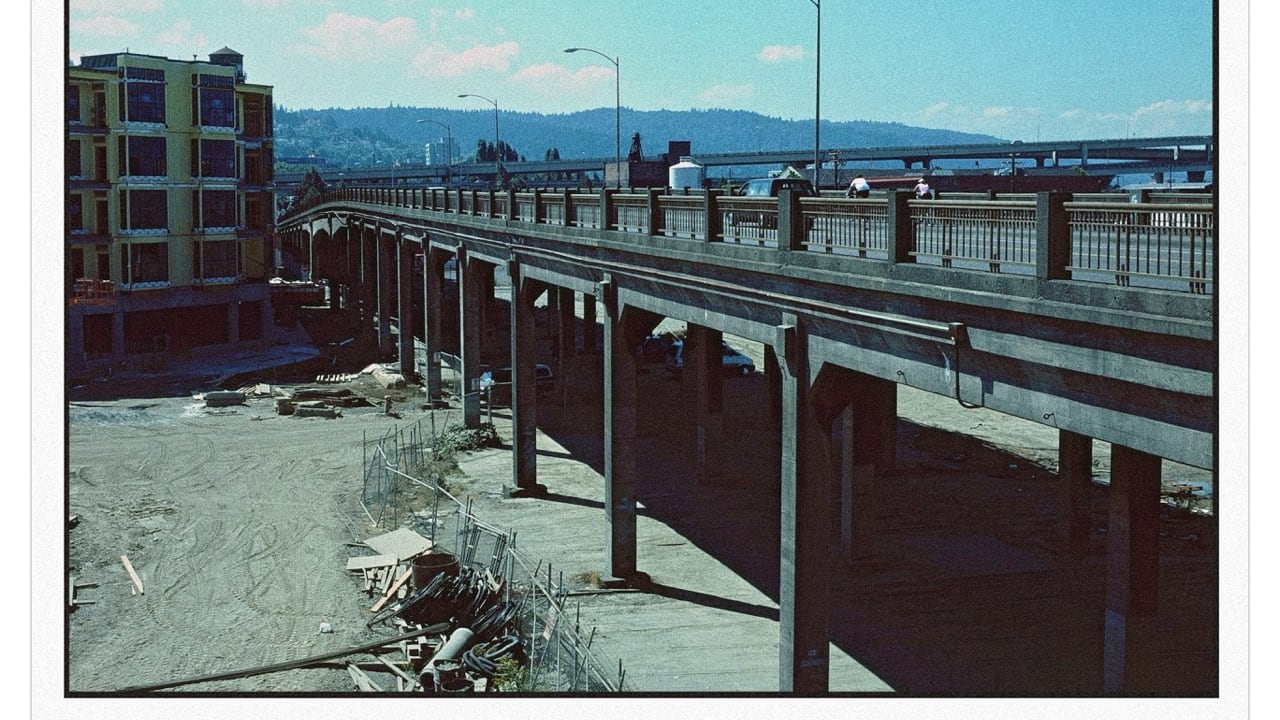Before it became Portland’s swankiest urban neighborhood, the Pearl District was a forlorn, dusty old railyard bisected by an elevated street called the Lovejoy viaduct.
Built in 1928, the viaduct lifted traffic up over a busy railyard from Northwest 14th Avenue to the Broadway Bridge. By the 1990s, the railyard was long gone and developers led by Homer Williams recognized that the neighborhood’s proximity to downtown and its vast open spaces made it ripe for development. Except for one problem: The viaduct was in the way. And making matters more difficult, the viaduct had also become a work of art.
Between 1948 and 1952, a Greek American night watchman, Tom Stefopoulos, idled away the hours illustrating the columns supporting the viaduct with figures from Greek mythology, such as the philosopher Diogenes. The exquisite classical sketches and their gritty railyard setting turned the Lovejoy columns into a cultural landmark.
Was there a way to demolish the viaduct but somehow save the columns?
Figuring out how to preserve paintings on concrete columns proved to be an enormous challenge, says sculptor and architect James Harrison. The columns were massive, standing 10 feet tall and weighing nearly 30,000 pounds each. Harrison and allies in a group called Rigga worked with Williams to find a solution. Eventually, the Portland Bureau of Transportation agreed to a kind of surgery, deploying special tools in 1999 to remove 10 of the columns, rather than knock them down with a wrecking ball.
“Getting them down was really difficult,” Williams says.
Saving the columns was only step one. There was no obvious place to display them and no money available, so they were wrapped and stored under the Fremont Bridge. In 2005, another Pearl District developer, John Carroll, volunteered to install two of the columns in the courtyard of an apartment complex, the Elizabeth, on Northwest 10th Avenue between Everett and Flanders streets.
The other columns met a harsher fate. “The ones left under the bridge got ground into dust,” Harrison says.
The surviving columns preserve not only Stefopoulos’ artwork but a slice of history, Harrison says. Stefopoulos was part of a sizable flow of Greek immigrants who came to Portland seeking work. “It shows me how difficult it is to have something carry over to the next generation,” Harrison says of the efforts to preserve the columns. “It’s a beautiful story that has been held in a kind of suspended animation and never reached a full resolution.”
Demolishing the viaduct united the Pearl District and opened the northern half of the neighborhood for redevelopment, creating homes for thousands of residents. To get a sense of the area’s industrial heritage, stop by the Elizabeth to admire the surviving columns.
 Opens in new window
Opens in new window
